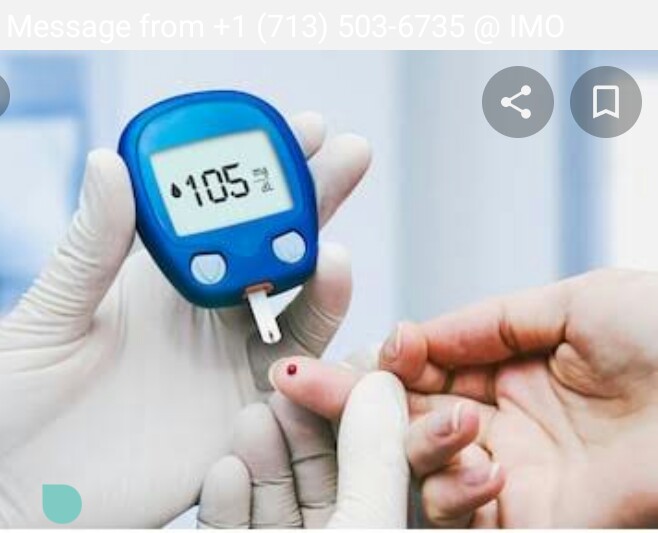NewsTrack Special: Sugar, Diabetes, prevention and Management

Sugar is very common in our lives, and almost everyone believes that it is an attractive sweet – one of many carbohydrates in the diet of civilised countries. But sugar is really quite an extraordinary substance. It is unique in the plant that makes it, in the materials that chemists can produce from it,
and in its use in foods at home and in industry. It has shown to have unique effects in the body, different from those of other carbohydrates. Since it now amounts to about one sixth of the total calories consumed in the wealthier countries, it is essential that more is known about what it does to people when it enters the body in food and drink.
The different sorts of sugar, including sucrose and glucose, all belong to a group of substances known as carbohydrates.
The carbohydrates in our diet can be divided into those that the body can digest and absorb from the gut and those that cannot be absorbed; they are sometimes referred to as ‘digestible and indigestible’, or ‘available and unavailable’. The unavailable carbohydrates, which pass through the body virtually unchanged, make up the greater part of what is now known as fibre and used to be calledroughage. This mostly consists of cellulose, the chief constituent of cotton and of paper.
The available or digestible carbohydrate of the diet consists almost entirely of sugars and starch. They are all made up of units called monosaccharides. Chemists use ‘sugar’ to anyone of a particular group of substances that have similar properties but are not identical. Some of the better known sugars are glucose, fructose,
maltose, lactose and sucrose; these are either monosaccharides or disaccharides.
The best known monosaccharides – sugars made up of single units – are glucose, fructose and galactose. Glucose is the first product of photosynthesis in plants, and is the main source of energy for both plants and animals. Fructose, together with some glucose and sucrose, is found in fruits. Galactose exists only in the animal kingdom, as part of milk sugar – lactose.
Glucoseis a sugar found, usually with other sugars, in some fruits and vegetables. It is very important to biochemists, biologists and nutritionists because it is a key material in the metabolism of all plants and animals. Many of our principal foods are sooner or later converted in the body into glucose, and it is one of the most important substances that is metabolized (oxidized or burned) in the tissues to supply energy for everyday activities.
There is always glucose in the blood stream, and this is usually called ‘blood sugar’. In healthy people, a complicated interaction of a number of hormones contrives to keep the level of the blood sugar fairly constant. If you eat ordinary sugar or starch, or one of several other substances, glucose will be released during digestion and this will be absorbed from the alimentary canal into the blood. The level of blood glucose therefore rises.
Immediately, however, there is an out flow of hormones, especially insulin from the pancreas, into the blood stream; the effect of this is to lower the level of glucose towards its normal level. This works chiefly by converting it into a polysaccharide (made of many monosaccharide units) called glycogen and tucking this away in the muscles and liver, where it can be called upon again to release glucose if the level in the blood falls.
Sucrose is one of three common disaccharides. It is made up of one unit of glucose joined to one unit of fructose. When digested, a mixture of equal amounts of glucose and fructose, called ‘invert sugar’, is produced.
There is reason to believe that it is the fructose part of sucrose that is responsible for many of the undesirable effects of sucrose in the body.
There are two other disaccharides to be found in human diets.
One is maltose, made up of two units of glucose joined together.
This is produced during the digestion of starch, for example when grain like barley begins to germinate, or when starch is in the mouth being chewed, or when it reaches the intestine. It is later digested to glucose. The third disaccharide is lactose, produced by the joining together of two monosaccharides, glucose and galactose. It occurs only in milk, or in foods such as yoghurt that are made from milk and that include the water part. Large quantities of lactose cause diarrhoea, and even relatively small quantities have this effect on people with lactose intolerance. However, such people are not affected by small amounts of milk – say, up to a pint a day taken at intervals. They also tolerate cheese, since most of the lactose remains in whey when cheese is made.
Starch, which occurs as a store of energy in plants, is made up of many glucose units joined together – a polysaccharide. It is easily digested either by enzymes in the body or enzymes extracted from moulds, or by heating in solution with acid.
The effect is to break down the starch into smaller and smaller pieces. The early stages result in the production of dextrins. Later maltose is produced, and finally glucose. Glycogen, is another polysaccharide, found in the liver and muscles of animals.
Like starch it is a store of energy, but unlike starch it is present in relatively small quantities: the total amount of glycogen in an adult human body is no more than 350 grams. Cellulose is also a polysaccharide, but is not digestible.
In normal metabolism, we eat food, the food is digested and the carbohydrate part is broken down into simple sugars, much of which is glucose. Glucose (blood sugar) enters the blood, and insulin is produced by the pancreas to manage its transport and distribution around the body. Insulin, acting like an usher, opens doors for glucose into different cells for a variety of purposes. Some of the glucose is converted to short-term energy for immediate cell use, and some is stored as long-term energy (fat) for later use.
The body works in a way that keeps the organs and tissues in a pretty constant environment. Anything, for example, that makes the level of sugar (glucose) in your blood fall below normal, or rise above normal, is promptly followed by actions that restore it to its original level. These actions are controlled partly by the nervous system but chiefly by the hormones. If for any reason the control mechanisms are not working properly, you will have an excessive amount of sugar in the blood, or a deficient amount, for part or all of the time.
This will lead to a condition of a high blood sugar (hyperglycaemia) or low blood sugar (hypoglycaemia) and diabetes happens to be the commonest cause of hyperglycaemia.
As one develops diabetes, this metabolic process collapses.
TYPES
Type 1 diabetics cannot produce adequate insulin because the insulin-producing cells of their pancreas have been destroyed or are dysfunctional. The immune system attacks the pancreas cells responsible for producing insulin. This is the result of the body attacking itself, making Type 1 diabetes an autoimmune disease.
Type 2 diabetics can produce insulin, but the insulin doesn’t do its job effectively: once the insulin starts “giving orders” to dispatch the blood sugar into cells, the body doesn’t pay attention, and the blood sugar is not metabolized properly. This is called insulin resistance.
Gestational (pregnancy-related). Some women develop diabetes during pregnancy usually toward the end of pregnancy. It effects approximately 3 to 5 percent of all pregnant women. Although it goes away after pregnancy, these women have a higher risk for developing type 2 diabetes later in life.
Type 1 diabetics cannot produce insulin. It is difficult to imagine any dietary change that might aid their predicament. Type 2 diabetics, unlike Type 1, are more “treatable” because they haven’t incurred such extensive damage to their pancreas.
RISK FACTORS
Being more than 20% overweight
Physically inactive
Having a first degree relative with diabetes (parents or siblings)
Having an “Impaired Fasting Glucose” (IFG) or “Impaired Glucose Tolerance” (IGF) on previous blood tests.
Having Triglycerides (blood fats) which are more than 250 mg/dl
Having HDL cholesterol (“good” cholesterol ) which is less than 35 mg/dl
Having a history of hypertension (high blood pressure)
Having a history of gestational (pregnancy-related) diabetes or giving birth to a baby which weighed more than 9 pounds
COMPLICATIONS
The most important health impacts of diabetes are the long-term complications it can cause. Most of these long-term complications are related to the adverse effects diabetes has on arteries and nerves. It causes damage to both large and small arteries.
Cardiovascular disease.
Diabetics have up to 2–4 times the risk of death from heart disease or stroke. Heart disease and stroke cause about 65% of deaths among people with diabetes.These deaths could be reduced by 30% with improved care to control blood pressure and blood glucose and lipid levels.
Amputation
Over 60% of all lower limb amputations occur with diabetics.
Blindness
Diabetes is the leading cause of blindness in adults. About 28.5% of diabetics have retinopathy that may lead to loss of vision.
Sexual Dysfunction.
Approximately 70% of all adult males with diabetes currently suffer or will experience sexual dysfunction or impotence.
Kidney Disease
Diabetes is the leading cause of end-stage kidney disease.
Dental Disease
Increased frequency and severity of gum disease that can lead to tooth loss.
Blindness
Long-standing diabetes often causes deterioration of vision because of the development of abnormalities in the retina, a condition known as ‘diabetic retinopathy’ or ‘retinitis’.
PREVENTION
In order to prevent this, only foods that result in a gentle rise in blood sugar should be eaten, so that an excessive output of insulin by the pancreas is not evoked. That is why the best treatment for a lack of sugar (glucose) in the blood is the paradoxical treatment of avoiding sugar (sucrose) in your diet as much as possible.
Recent studies shows that the rate of diabetes could be reduced by 58% just by modest lifestyle changes, including exercise, weight loss, and a moderately low-fat diet.
Diet
A proper diabetic diet should have a low glycemic index – which means containing low simple carbohydrates, moderate protein and high fiber. This diabetic diet will reduce blood sugar, reduce insulin levels, and reduce the need for medications. It will also help to reduce weight, reduce blood pressure and support overall health and energy. However, these diets allow only one to two ounces of meat daily and are impractical for home use for many individuals.
Exercise
Many studies have shown that exercise is of great benefit to diabetics and can significantly reduce the risk of developing type 2 diabetes. Regular physical activity helps reduce weight, lower blood sugar, improve insulin sensitivity, strengthen the immune system, improve circulation, lower blood pressure, lower LDL (“bad”) cholesterol, raise HDL (“good”) cholesterol, and reduce risk of heart disease.
Nutritional Supplements
There are a number of nutritional supplements that every diabetic should be taking on a daily basis. These supplements are very effective in helping to lower blood sugar and insulin levels, reduce cholesterol levels, reduce triglyceride levels, reduce blood pressure, improve energy, and reduce the risk of heart disease.
NATURAL/FOODS SUPPORT
Cinnamon
Cinnamon has been medically proven to prevent and combate diabetes. It plays the role of an insulin substitute in type II diabetes.
In the same light, some scientists had been concerned about potentially toxic effects of regularly consuming cinnamon. The latest research shows that the potentially toxic compounds in cinnamon bark are found primarily in the lipid (fat) soluble fractions and are present only at very low levels in water soluble cinnamon extracts, which are the ones with the insulin-enhancing compounds.
Banana Leaf
Banana Leaf provides blood sugar lowering effect similar to that of insulin in that it induces glucose transport from the blood into body cells. It is brewed into a tea and used as a treatment for diabetes and as a weigh loss aid.
Fenugreek
Fenugreek helps regulate blood glucose. The glucose-regulating, antidiabetic properties of fenugreek seed are linked to a novel free amino acid, 4-hydroxyisoleucine. This compound stimulates insulin secretion, thereby limiting the extent to which blood glucose is elevated; by promoting insulin secretion and inhibiting the rise of blood glucose, it helps stabilise blood sugar and reduces body fat production. 15g/day fenugreek shows to significantly reduce glucose levels after meals. Today fenugreek shows value as an antidiabetic agent with potential for weight control due to its 4-hydroxyisoleucine content. Some supplements are capsules of powdered seed, while others are more concentrated extracts standardized to 4-hydroxyisoleucine.
Experimental and clinical studies have demonstrated the antidiabetic properties of fenugreek seeds. The active ingredient responsible for the antidiabetic properties of fenugreek is in the defatted portion of the seed that contains the alkaloid trogonelline, nicotinic acid and coumarin. Fenugreek contains six compounds that help regulate blood sugar levels. Modern research shows that fenugreek seeds not only lower blood glucose but reduce insulin levels, total cholesterol and triglycerides, while increasing HDL (the good cholesterol).
Bitter Melon
Also known as African cucumber, balsam pear and bitter gourd is used primarily to regulate blood sugar in cases of diabetes, as well as for colitis and dysentery, intestinal worms, jaundice and fevers. Among the constituents in bitter melon, charantin is identified as a primary agent for blood-sugar regulation. Charantin demonstrates hypoglycaemic (blood sugar lowering) or other actions of potential benefit in diabetes. The fruits also contain insulin-like peptides, including one known as polypeptide P, and alkaloids. It is likely that several substances in bitter melon contribute to its blood sugar-modifying effects. Bitter melon demonstrates significant blood-sugar control after food intake and overall blood sugar-lowering effects.
Pumpkin
Research conducted on pumpkin shows that it contains compounds that help to prevent the destruction of and regeneration of damaged pancreatic cells. As a result, pumpkin also helps to increase insulin levels in the blood. The protective effect of pumpkin is thought to be due to both antioxidants and molecules that mediate insulin activity. So keep on eating your pumpkin and drinking your pumpkins soup.
Cherries contain a group of antioxidants that help increase insulin production.
Green Tea
Five cups of black or green tea per day research says could significantly reduce cataract formation. Black, green and oolong teas could also increase insulin activity. Add lemon and subtract sugar.
Coconut oil
It is believed that coconut oil puts less of a demand on the enzyme production of the pancreas. This lessens the stress on the pancreas during mealtime when insulin is produced most heavily, thus allowing the organ to function more efficiently. Coconut oil in the diet enhances insulin action and improves binding affinity compared to other oils.
Ginseng
It is believed that taking ginseng before a meal reduces blood sugar in people both with and without diabetes.
Neem Leaf
Neem leaf is one of the herbs which has proven to lower blood sugar levels effectively. Its effectiveness is not only on blood sugar, but also improves circulation.
Basil (scent leaf)
Scent leaf helps in lower blood sugar levels in Type II diabetes.
Aloe Vera Gel
Aside being a home remedy for minor burns and other skin conditions. A recent study on the evaluated the effect of aloe vera gel on blood sugar — isolation of a number of active phytosterol compounds from the gel were found to reduce blood glucose and glycosylated hemoglobin levels.
Ginger
Ginger extract is believed to reduce blood levels of insulin by 10 percent and blood sugar by 35 percent. It also helps to increase cells’ absorption of glucose independent of insulin, improves insulin sensitivity, lowers levels of insulin, and significantly lowers levels of LDL cholesterol and triglycerides.
Others are:
Papaya
Okra
Spinach
Black seeds
Bitterleaf
Garlic
Soursop leaf
Mustard seeds
Cabbage
Turmeric
Moringa leaf
Moringa, soursop and bitter leaves can be brewed and taken moderately. Spinach, turmeric, garlic, okra and black seeds can be cooked with.
References:
John Yudkin, Pure, White and Deadly, 2nd edn. (1986) Penguin books
Dr. Biswaroop Roy Chowdhury DIABETES Type I & II – CURE IN 72 HRS (2014)
All rights reserved. This material and any other digital content on this platform may not be reproduced, published, broadcast, written or distributed in full or in part, without written permission from NewsTrack Nigeria.
You can reach us via email: newstracknigeria@gmail.com








